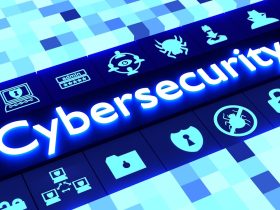In today’s Cybersecurity Roundup, we dissect five transformative developments reshaping the security landscape. From the UK’s decade-long economic blueprint embedding AI, cybersecurity, and quantum initiatives, to Washington’s projections of Iranian cyber-retaliation, to new AI-driven assessment tools, workforce compensation trends, and a tactical partnership between Stronghold Data and SonicWall—this briefing delivers concise analysis, expert commentary, and future-facing insights. Read on for our op-ed–style deep dive into the strategic implications for CISOs, security vendors, investors, and policymakers.
Introduction: A Nexus of Innovation, Geopolitics, and Market Forces
The cybersecurity sector in mid-2025 finds itself at a critical inflection point. Government strategies, from London to Washington, are integrating AI and quantum computing into national defense and economic agendas. Meanwhile, state-sponsored threats grow more brazen as geopolitical tensions fuel retaliatory tactics in cyberspace. On the commercial front, AI-powered security assessments promise smarter risk management, while enterprise budgets must absorb rising talent costs and strategic vendor alliances. Against this backdrop, our daily roundup highlights the partnerships, funding shifts, and emergent dangers that demand your attention:
-
UK’s 10-Year Economic Plan embeds AI, cybersecurity, and quantum computing to accelerate innovation and resilience.
-
DHS Warning: Iran’s cyber forces poised to strike U.S. networks in response to nuclear site operations.
-
KPMG’s AI-Powered Assessments offer a next-generation approach to vulnerability management and compliance.
-
Cybersecurity Salaries Surge: High-skilled professionals command premium compensation amid talent shortages.
-
Stronghold Data & SonicWall partnership simplifies security operations for SMEs through integrated CSE solutions.
Let’s unpack each story, examine the broader significance, and surface actionable takeaways for security leaders navigating an increasingly complex threat and opportunity landscape.
1. UK’s 10-Year Economic Plan: AI, Cybersecurity, and Quantum Computing at the Core
Source: Computerworld
Key Announcement:
The UK government’s newly unveiled “Innovation and Growth Strategy 2025–2035” places cybersecurity, AI, and quantum technologies at the heart of its economic roadmap. Over the next decade, £30 billion will be channeled into research grants, public-private partnerships, and skills development programs aimed at boosting resilience and competitive advantage in critical sectors.
Analysis & Commentary:
-
Strategic Imperative: Embedding cybersecurity into economic planning reflects growing recognition that digital threats can undermine GDP growth and national security. By funding AI-powered threat detection and post-quantum encryption, London aims to preempt future attacks that exploit quantum decryption and large-scale machine learning–driven intrusions.
-
Industry Collaboration: The plan mandates the creation of Cyber Innovation Hubs in key tech clusters (Cambridge, Manchester, Glasgow), facilitating collaboration among startups, academia, and incumbents. These hubs will pilot zero-trust architectures and integrate quantum-safe key exchange methods.
-
Skills & Workforce: Recognizing a global cybersecurity talent shortage, the strategy includes £2 billion for scholarships, apprenticeships, and retraining programs—targeting 100,000 new cybersecurity specialists by 2030.
Implications:
-
Vendor Opportunities: Security vendors with AI and quantum-safe portfolios stand to gain from government contracts and co-innovation grants.
-
Innovation Acceleration: Public funding may lower R&D costs, spurring breakthroughs in real-time anomaly detection and homomorphic encryption.
-
Regulatory Evolution: Enhanced data-sovereignty frameworks and mandatory quantum-migration timelines for critical infrastructure will likely follow.
2. DHS Expects Iran’s Cyber Forces to Target U.S. Networks Post-Strike
Source: Nextgov
Key Announcement:
The U.S. Department of Homeland Security warns that Iran’s cyber warfare units are preparing retaliatory operations against American government and private sector networks, potentially launching disruptive intrusion campaigns in the coming weeks.
Analysis & Commentary:
-
Geopolitical Cyber Spin-Up: As kinetic strikes on Iranian nuclear facilities escalate, so does the risk of state-sponsored cyberattacks on U.S. critical infrastructure—energy grids, financial systems, and government portals. DHS emphasizes the need for heightened vigilance and cross-sector information sharing.
-
Tactics, Techniques & Procedures (TTPs): Iranian threat actors—such as APT34 and APT33—have historically employed spear-phishing, custom malware, and destructive wiper tools. DHS forecasts an uptick in Supply Chain Attacks, exploiting third-party vendors.
-
Defensive Posture: Federal agencies are accelerating Zero-Trust and Endpoint Detection and Response (EDR) deployments, while urging private firms to activate Incident Response playbooks and engage in government-industry cyber exercises.
Implications:
-
Sectoral Impact: Utilities, healthcare, and financial services must prioritize threat hunting and patch management to thwart advanced persistent threats.
-
Policy & Funding: Congress may revisit the Cybersecurity and Infrastructure Security Agency (CISA) budget to bolster domestic defensive capabilities.
-
International Collaboration: Allied governments can share threat intelligence under a unified framework to dilute Iranian cyber campaigns’ effectiveness.
3. KPMG Unveils AI-Powered Cybersecurity Assessments
Source: KPMG
Key Announcement:
Global professional services firm KPMG launched “KPMG Cyber AI Assess”, an AI-driven platform that streamlines risk assessments by automatically analyzing vulnerabilities, configuration drift, and compliance gaps across hybrid IT environments.
Analysis & Commentary:
-
Innovative Risk Management: Leveraging supervised and unsupervised learning, Cyber AI Assess ingests network scans, log aggregates, and threat-intelligence feeds to prioritize remediation based on potential business impact.
-
Efficiency Gains: Early adopters report a 50% reduction in manual assessment time and a 30% increase in vulnerability remediation velocity—enabling security teams to address high-risk issues before exploitation.
-
Integration & Scalability: The platform offers connectors for SIEM, SOAR, and cloud-security posture management (CSPM) tools, facilitating seamless incorporation into existing security operations centers (SOCs).
Implications:
-
Competitive Differentiation: Traditional consultancies must enhance their offerings with AI to remain relevant against pure-play security vendors.
-
Risk Visibility: Real-time dashboards and predictive analytics will shift the industry from point-in-time audits to continuous security validation.
-
Ethical Considerations: Reliance on AI models necessitates transparency around algorithmic biases and ensures compliance with data-protection regulations, such as GDPR and CCPA.
4. Cybersecurity Salaries Surge Amid Talent Shortage
Source: Dice
Key Findings:
The latest Dice 2025 Cybersecurity Salary Report reveals that high-skilled security professionals—particularly in cloud, DevSecOps, and AI-security roles—command up to 25% higher salaries compared to 2024 levels, with median compensation reaching $145,000 per annum in major U.S. tech hubs.
Analysis & Commentary:
-
Supply-Demand Imbalance: As organizations expand security teams to counter growing threat volumes, competitive salary offers—and accompanying benefits like remote work stipends—are the norm to attract and retain top talent.
-
Role Evolution: Emerging positions such as AI Security Engineer, Cloud Threat Hunter, and Quantum Safety Analyst are at the forefront of compensation hikes, reflecting shifting priorities toward advanced technical skill sets.
-
Retention Strategies: Beyond salary, firms are investing in continuous professional development, certification sponsorships (CISSP, CEH, GIAC), and clear career pathways to curb turnover.
Implications:
-
Budgetary Pressures: Security leaders must justify headcount expansions and negotiate higher budget allocations with CFOs, emphasizing risk reduction ROI.
-
Emerging Markets: Organizations may pivot to nearshore or offshore talent pools, balancing cost and expertise, while grappling with cross-border data-sovereignty concerns.
-
Automation Imperative: To alleviate human capital constraints, enterprises will increasingly adopt Security Orchestration, Automation, and Response (SOAR) platforms and AI-driven tooling.
5. Stronghold Data Leverages SonicWall CSE for Simplified Security
Source: PR Newswire
Key Announcement:
Stronghold Data, a managed security service provider (MSSP), announced integration of SonicWall Capture Security Center (CSE) into its service portfolio, enabling clients to deploy unified threat management, secure remote access, and network segmentation through a single-pane-of-glass console.
Analysis & Commentary:
-
Service Simplification: By consolidating firewall management, intrusion prevention, and secure SD-WAN under CSE, Stronghold Data delivers faster incident response and streamlined policy enforcement—critical for SMEs lacking large in-house security teams.
-
Technology Partnership: The alliance underscores SonicWall’s push to extend CSE beyond on-prem firewall appliances into SaaS and cloud ecosystems, broadening its MSP ecosystem.
-
Customer Impact: Clients report 40% fewer configuration errors and 25% faster policy roll-outs, reducing exposure windows and operational overhead.
Implications:
-
MSSP Differentiation: Smaller MSPs can leverage robust vendor partnerships to offer enterprise-grade features without heavy R&D investment.
-
Platform Convergence: As security platforms converge, seamless integration and intuitive UX become procurement decision drivers.
-
SME Empowerment: Simplified security stacks lower barriers for growing companies to adopt mature defenses against ransomware, phishing, and IoT threats.
Conclusion: Navigating Complexity with Strategic Foresight
Today’s cybersecurity briefing underscores a dynamic interplay of technological innovation, geopolitical tension, and market realignment. Key takeaways for security executives and stakeholders:
-
Holistic National Strategies: Governments integrating AI, quantum computing, and cybersecurity into economic planning reflect the inseparability of digital resilience and growth.
-
Heightened Threat Environment: State-sponsored actors, as illustrated by Iran’s looming cyber-retaliation, necessitate proactive defense postures and real-time intelligence sharing.
-
AI as Force Multiplier: From KPMG’s automated assessments to Strategic IQ in vendor alliances, AI is redefining how risks are identified, prioritized, and remediated.
-
Talent & Automation Balancing Act: Surging salaries spotlight the talent crunch, driving investments in skill development and security automation to sustain robust defenses.
-
Simplified Security for All: Partnerships like Stronghold Data and SonicWall democratize advanced protections, enabling organizations of all sizes to adopt sophisticated security architectures.
As cyber threats evolve and the security market innovates at breakneck speed, strategic foresight—rooted in the latest industry developments—remains the most potent defense. Stay tuned to Cybersecurity Roundup for daily analysis, expert commentary, and actionable insights to guide your security roadmap.


















Got a Questions?
Find us on Socials or Contact us and we’ll get back to you as soon as possible.